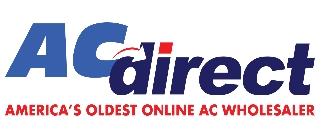Cost-Effective Heating Solutions: Horizontal Furnaces vs. Traditional Systems
-
 By
Michael Haines
By
Michael Haines
- Jan 24, 2024

Cost-Effective Heating Solutions: Horizontal Furnaces vs. Traditional Systems
In today's dynamic energy landscape, the significance of cost-effective heating solutions cannot be overstated. As households and businesses grapple with the constant rise in energy costs, the need for efficient heating systems has become paramount. This blog aims to shed light on the pivotal role that heating solutions play in both financial planning and environmental sustainability.
A. Importance of Cost-Effective Heating Solutions
The ever-increasing cost of energy has prompted individuals and organizations to seek heating solutions that not only provide warmth but also do so in an economically viable manner. As consumers become more conscious of their energy consumption, the importance of cost-effective heating solutions is magnified. This section will delve into the economic implications of heating choices and their direct impact on budgets.
B. Introduction to Horizontal Furnaces and Traditional Heating Systems
Two primary contenders take center stage in heating solutions: horizontal furnaces and traditional heating systems. Horizontal furnaces, with their innovative design and technology, represent a modern approach to heating. On the other hand, traditional heating systems encompass a range of well-established methods, from forced-air systems to radiant heating.
C. Comparing Costs and Benefits
The primary objective of this blog is to empower readers with the knowledge needed to make informed decisions about their heating systems. By conducting a thorough analysis of both horizontal furnaces and traditional systems, we aim to highlight the associated costs and benefits. This comparative exploration will serve as a valuable resource for individuals and businesses looking to optimize their heating solutions for efficiency, cost-effectiveness, and environmental impact. Join us as we navigate the intricacies of heating technologies to help you make choices that align with your financial and environmental goals.
Understanding Horizontal Furnaces
A. Explaining How Horizontal Furnaces Work
Horizontal furnaces operate on a straightforward yet effective principle. These heating systems feature a horizontal orientation, allowing for efficient heat distribution throughout a space. As air flows horizontally through the furnace, it encounters a heat exchanger that warms it. The now-heated air is then circulated into the living or working areas, ensuring a consistent and comfortable temperature.
This design minimizes the energy required to move air through the system, promoting efficiency and reducing overall heating costs. Unlike traditional vertical furnaces, horizontal models take advantage of a compact and streamlined layout, optimizing the heating process for enhanced performance.
B. Assessing Energy Efficiency and Environmental Considerations
One key advantage of horizontal furnaces is their commendable energy efficiency. By distributing heat evenly and effectively, these systems minimize energy wastage, translating into lower utility bills for users. Additionally, the improved efficiency contributes to a reduced carbon footprint, aligning with the increasing emphasis on environmentally friendly heating solutions.
Horizontal furnaces often incorporate advanced technologies, such as variable-speed blowers and programmable thermostats, further enhancing their energy efficiency. As consumers seek eco-conscious options, the environmental considerations of horizontal furnaces make them an appealing choice for those aiming to reduce both costs and their ecological impact.
C. Exploring Installation and Maintenance Costs Associated with Horizontal Furnaces
When it comes to installation, horizontal furnaces present a convenient and cost-effective option. Their compact design allows for versatile placement, accommodating various installation configurations. This flexibility not only simplifies the installation process but also reduces associated costs.
Maintenance costs for horizontal furnaces are generally manageable. Routine tasks, such as filter replacement and system inspections, are straightforward and can be performed with ease. The design simplicity of horizontal furnaces contributes to fewer components requiring regular maintenance, minimizing the likelihood of unexpected expenses.
Traditional Heating Systems
A. Overview of Traditional Heating Methods
Traditional heating systems encompass a variety of methods designed to keep spaces warm and comfortable. Two prevalent techniques are forced-air systems and radiant heating.
Forced-air systems operate by distributing heated air through ducts, ensuring consistent warmth throughout a building. These systems often rely on furnaces or heat pumps to generate the warm air. In contrast, radiant heating involves the use of heating elements, such as hot water pipes or electric coils, to warm specific surfaces, promoting a more localized and targeted approach to heating.
B. Energy Efficiency and Environmental Impact of Traditional Systems
Examining the energy efficiency and environmental impact of traditional heating systems is crucial in assessing their sustainability. While effective in distributing heat, forced-air systems can sometimes result in energy loss through the ductwork. Additionally, the continuous operation of fans and blowers may contribute to higher energy consumption.
On the other hand, radiant heating is often praised for its efficiency, as it directly warms objects and people in its path. This targeted approach can lead to reduced energy consumption, making radiant heating systems an environmentally conscious choice.
C. Installation and Maintenance Costs Associated with Traditional Heating Systems
Understanding the financial implications of installing and maintaining traditional heating systems is essential for prospective users. Forced-air systems generally involve the installation of extensive ductwork, which can increase both labor and material costs. Regular maintenance is also necessary to ensure the proper functioning of components such as furnaces and blowers.
Radiant heating systems, while often considered more cost-effective in terms of installation, may incur higher upfront costs for installing heating elements. However, their simplicity and fewer mechanical components can result in lower maintenance costs over time.
Cost Comparison
A. Initial Costs of Horizontal Furnaces vs. Traditional Systems
When considering a heating system, the upfront investment plays a crucial role in decision-making. Horizontal furnaces, with their innovative design, often come with distinct initial costs. These furnaces leverage cutting-edge technology, impacting the pricing structure. On the other hand, with their established methods, traditional heating systems may have varying upfront expenses based on the specific system chosen.
B. Operational Costs and Energy Efficiency Comparison
Beyond the initial investment, operational costs and energy efficiency are pivotal factors influencing the overall cost-effectiveness of a heating solution. Horizontal furnaces are known for their energy-efficient performance, optimizing heat distribution, and minimizing waste. This translates to lower ongoing operational costs. In contrast, traditional systems may exhibit different energy efficiency levels depending on the type, potentially resulting in varied operational expenses.
C. Long-term Cost Considerations and Return on Investment
A comprehensive evaluation of heating solutions goes beyond immediate costs, delving into long-term considerations and the potential return on investment (ROI). With their advanced features, horizontal furnaces offer substantial savings over time through reduced energy consumption and maintenance costs. Traditional systems, while reliable, may require a closer examination of their long-term efficiency and associated expenses to determine the overall ROI.

Installation and Maintenance
A. Ease of Installation for Horizontal Furnaces
Installing a horizontal furnace is a streamlined process that offers several advantages over traditional heating systems. Contractors often find that the design and layout of horizontal furnaces facilitate a quicker and more straightforward installation compared to their traditional counterparts. The compact nature of horizontal furnaces allows for flexibility in placement, making them suitable for various spaces.
One notable feature contributing to the ease of installation is the horizontal airflow design, which allows for more convenient ductwork arrangements. This design minimizes the need for extensive modifications to existing structures, reducing installation time and labor costs.
B. Common Maintenance Requirements for Horizontal Furnaces
Maintaining a horizontal furnace is a relatively straightforward task that contributes to its long-term efficiency. Regular inspections and filter replacements are among the common maintenance requirements. The horizontal configuration of these furnaces often results in easily accessible components, simplifying routine check-ups.
To ensure optimal performance, homeowners or facility managers should schedule periodic inspections to assess components such as the blower motor, heat exchanger, and ignition system. Addressing minor issues promptly can prevent them from escalating into more significant problems, enhancing the overall reliability of the heating system.
C. Installation and Maintenance Challenges with Traditional Heating Systems
Traditional heating systems, in contrast, present unique challenges during both installation and maintenance. The intricate network of ductwork, especially in forced-air systems, can complicate the installation process, requiring careful planning and execution. Additionally, traditional systems' size and design constraints may limit placement options, leading to more complex installations.
Maintenance of traditional heating systems often involves navigating through tight spaces and hard-to-reach components. Accessing critical elements like the heat exchanger or burner may require disassembling parts of the system, increasing the time and effort involved in routine maintenance.
Conclusion
Informed decision-making involves understanding the advantages and disadvantages of each option and aligning those factors with individual preferences and values. Whether opting for the modern approach with horizontal furnaces or sticking to traditional methods, the key is to make a choice that aligns with both immediate needs and future considerations.
Remember, the quest for an efficient and cost-effective heating solution is a journey toward comfort, savings, and sustainability. By staying informed, readers can confidently choose a heating system that suits their unique circumstances and contributes to a warm, environmentally conscious living or working space.

 and now, NASCAR Racing Sponsor
and now, NASCAR Racing Sponsor










